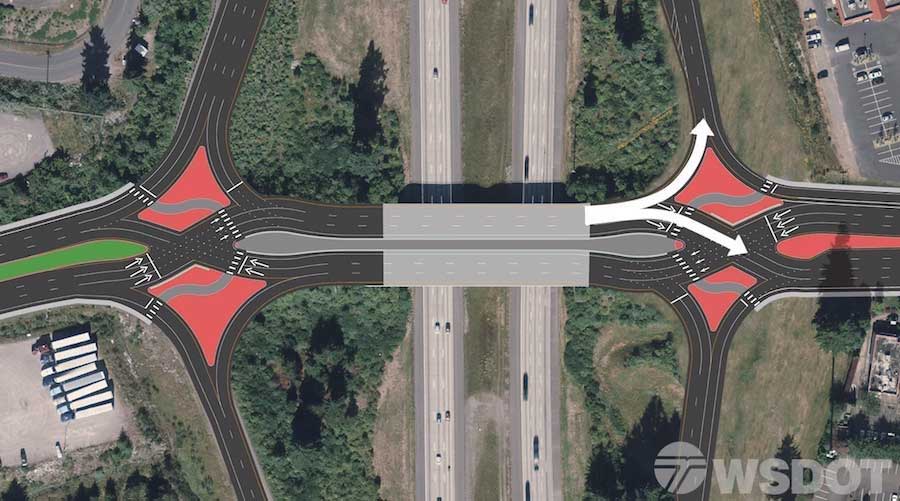The first-ever diverging diamond Interchange for Washington state enters the construction phase this year at the interchange between Interstate 5 and State Route 510 in Lacey, south of Tacoma.
Construction on the $72 million project is scheduled to start this fall, with completion in 2020. The project is currently out for bid, with an expected bid opening of Aug. 22. The existing interchange will undergo the complete overhaul to accommodate economic development for the Hawks Prairie community and expand on traffic improvements already in place.
The diverging diamond Interchange (DDI) is a type of diamond interchange in which the two directions of traffic on the non-freeway road cross to the opposite side on both sides of the bridge at the freeway. This design is proven to improve safety by reducing conflict points, decrease wait times at signals, increase traffic flow and move more people in higher populated areas, says the Washington State Dept. of Transportation.
The particular style of DDI planned for the Washington interchange is designed to work with nearby intersections. This DDI will also accommodate bicyclists and pedestrians with a barrier-protected, multi-use lane located in the middle of the overpass.
The design of a DDI eliminates left-turn lights to keep traffic flowing. But the tradeoff comes with a less-than-traditional crisscrossing of lanes. For the Washington project, drivers turning left from the busy Marvin Road onto I-5 will no longer be forced to stop at a light.
Since 2000, traffic on the north side of the interchange has quadrupled and the widening of Marvin Road and rebuilding of Hogum Bay Road both put additional pressure on the I5/SR 510 interchange. The project will improve the areas leading to the interchange, update the ramp terminals at the interchange and widen the existing bridge while adding a dedicated southbound lane.
The DDI comes new to Washington, but has proven somewhat commonplace in other parts of the country. In fact, Oregon, California and Idaho already have DDI interchanges, putting Washington near the back of the line when it comes to the progressive interchange design. Still, Washington will work to debut its first-ever version of the design.
Follow Tim Newcomb on Twitter at @tdnewcomb.


Post a comment to this article
Report Abusive Comment